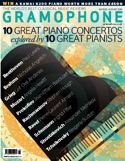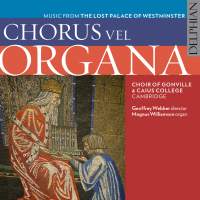Texte paru dans: / Appeared in: |
|
|
Outil de traduction (Très approximatif) |
|
|
Reviewer:
Edward Breen
There is much to be celebrated here as early music scholarship inspires joyful performances from the Choir of Gonville & Caius College. The album presents preReformation liturgical music for the Feast of St Stephen (December 26) alongside plainsong and its alternatives: chanting in chords, faburden and organ improvisations. Consequently, the jewel in this particular crown is the St Teilo organ, a reconstruction in the early English 16th-century style following research from John Harper at Bangor University’s ‘The Experience of Worship’ project. Organist Magnus Williamson revives improvisatory techniques appropriate for both plainsong and polyphony, leading to an album whose polyphonic delights are embedded in a liturgical soundscape likely to reflect practice in the chapel of St Stephen during Henry VIII’s reign.
The album takes its name from the opening track: ‘chorus vel organa’ is the rubric given in a Sarum Antiphoner of 1519 indicating ‘choir or organ’. The organ is tuned to a pungent, modified mean-tone temperament and replete with sprightly chiffs fronting each note. The singers gravitate towards this tuning and immediacy, especially in the Lady Mass Cycle where Magnus Williamsons’s dexterously improvised versets alternate with firm, robust polyphony. This leaves the somewhat polite a cappella performance of Ludford’s (c1485-c1557) Gloria in a rather incongruous corner since his polyphonic arches also need, in my opinion, an altogether more robust approach. The arrival of the full choir at the phrase ‘Gratias agimus tibi’, for instance, lacks gravitas and the spacious final ‘Amen’ leaves me wistful for the searing tuning of The Cardinall’s Musick (ASV) with altos en chamade.
Yet Cornysh’s
(d1502 or 1465‑1523) Magnificat is spectacular. Here, purposeful phrasing
serves up cadences with pleasing aplomb. It is surely testament to the rich
heritage of British vocal performance that young singers can assimilate these
styles so quickly and expertly. If ever there was a moment to bask in the
achievements of the early music revival and gaze in wonderment at its promising
future, then this is it. |
|
|
Consultez d'autres mois / Browse other months
|
|
|
|
|
|
Cliquez l'un ou l'autre
bouton pour découvrir bien d'autres critiques de CD |
|




